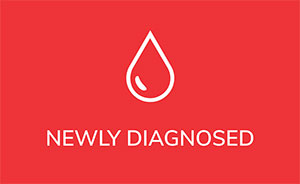
CLL / SLL Diagnosis
It would be hard to overstate the importance of getting a correct diagnosis, as the diagnosis determines the appropriate treatment.
The only way to definitively diagnose CLL is with a sophisticated test called flow cytometry that looks at the immune fingerprint of the cancerous clones. In CLL, this can almost always be done on the blood, but for SLL a lymph node biopsy may be necessary.
Bone marrow biopsies are rarely indicated as part of a routine blood work-up for CLL/ SLL. CT scans and PET scans are almost never needed at time of diagnosis.
Action Items for Diagnosis
Get the correct diagnosis.
Make certain that your diagnosis is confirmed with flow cytometry.
Ask "Why?"
CT scans and PET scans are almost never needed at time of diagnosis.
If your healthcare team is recommending bone marrow biopsies and extensive imaging ask “WHY?” and consider getting a 2nd opinion!
 Get the correct diagnosis.
Get the correct diagnosis.
Make certain that your diagnosis is confirmed with flow cytometry.
 Ask “Why?”
Ask “Why?”
CT scans and PET scans are almost never needed at time of diagnosis.
If your healthcare team is recommending bone marrow biopsies and extensive imaging ask “WHY?” and consider getting a 2nd opinion!
ADDITIONAL READING

RECENT NEWS
When appropriate, the CLL Society will be posting updates and background information on the present Coronavirus pandemic focusing on reliable primary sources of information and avoiding most of the news that is not directly from reliable medical experts or government and world health agencies.


